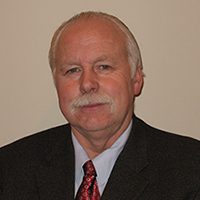
By / Peter Boileau, Chairperson, SMACNA-Western Washington Technical Committee
All areas of Washington state, including major cities, are currently using versions of the 2015 Washington State Energy Code (WSEC). It was anticipated that the new version of the code (2018 WSEC) would be incorporated into our jurisdictions this year (usually July for the state code, followed by amended versions for the City of Seattle and some other areas) but with the COVID-19 pandemic all new code updates are on hold (current target date is February 1, 2021).
Both the previous and the current 2015 WSEC and associated local codes are based on improving energy efficiency of buildings with each code update. This has been done by requiring lighting systems, building envelopes (more insulation/better glass), and mechanical systems to be more efficient. The basis of code compliance is measured by Energy Use Intensity or EUI. This measuring system compares the total predicted energy use of a new project to a code “baseline” building. Compliance has and will continue to be measured via either a “prescriptive” compliance path or a “total building performance” path (via computer simulation).
The 2018 code will continue to allow both paths to compliance, with the significant increase in Extra Efficiency Credits (from 2 to 6) if using the prescriptive compliance path, and a major shift in the total building performance path to change the primary performance metric to carbon emissions instead of energy consumption. This change to the 2018 WSEC and subsequent codes will not only continue to require more energy efficient building systems, but also will focus on greenhouse gas reduction to comply with code. This is a new approach that will impact both what types of energy are allowed (e.g. gas versus electric) and how these energy types must be used depending on building type and design.
The incorporation of greenhouse gas reduction into our codes comes from the work done by the American Society of Heating, Refrigerating and Air-Conditioning Engineers (ASHRAE), a national volunteer organization, which, for many years, has provided national standards for development of state and local energy codes. A key part of ASHRAE’s work in energy reduction is the philosophy that it is critical to de-couple economic growth from greenhouse gas emissions. In the past, ASHRAE has promoted the change to alternate refrigerants to reduce these emissions, and now the organization is providing guidelines on which types of energy provide the lowest emissions and how to use energy more effectively to reduce greenhouse gasses.
The 2018 WSEC will incorporate this code requirement in a couple of different ways. It will be looking at the carbon footprint of the electric utility serving the project site to determine if electricity or gas is the preferred fuel source. Those utilities that generate the majority of their electricity via burning gas or coal may have a much larger carbon footprint to produce and deliver electric power than a building that uses natural gas. In most buildings the use of heat pump technology rather than either gas combustion or electric resistance heat will be encouraged (and likely eventually required) in most new buildings starting with the 2018 code. The details of how this will be implemented will be further explored in future columns when our technical and code committee meets again next year. Stay tuned! ▪
Reference sites:
- ]Washington State Building Code Council:
https://www.sbcc.wa.gov/news/2018-code-effective-date-extended-february-1-2021 - Energy Code Overview from Seattle Department of Construction and Inspections:
http://www.seattle.gov/sdci/codes/codes-we-enforce-(a-z)/energy-code - ASHRAE Position Document on Energy Efficiency in Buildings
https://www.ashrae.org/file%20library/about/position%20documents/pd_energyefficiencyinbuildings_2020.pdf - First Printing of the WSEC – Commercial 2018:
https://www.sbcc.wa.gov/sites/default/files/2020-02/2018%20WSEC_C%20Final%20Package.pdf



